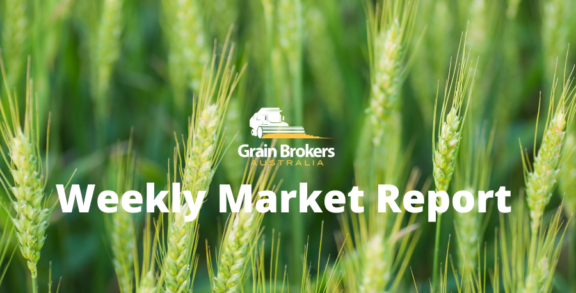
‘Old man winter’ on the prowl …
Grain Brokers Australia > Weekly Wire
by Peter McMeekin
The arrival of spring each year heralds’ new beginnings and new growth. It is the season of transformation, from gloomy dark days to bright sunny days, from cold to warmth, from a landscape dominated by greys, greens and browns to one accentuated by vivid bursts of colour.
For winter crops, spring is the season where they move from the vegetative phase to the reproductive phase, where potential is transformed into production, the reward for months of relentless crop husbandry. For the summer crops, spring signals the start of the cycle. As soil temperatures increase the sowing programs commence, assuming there is an adequate soil moisture profile.
The drought in the eastern states of Australia is well documented, and for many growers in that part of the world, the winter crop potential was lost many months ago. Some crops have already been cut for hay or had livestock turned onto them to utilize the residual feed value as opposed to buying expensive fodder.
Grain growers who are still in the winter crop game have been hoping that spring would bring a change from the sustained dry and cold conditions. They need a kind spring to ensure that their struggling crops make it through to harvest.
The arrival of September each year also brings the risk of crop damage due to frost. All winter cereal and oilseed crops are vulnerable. Damage may occur at any stage of development, but frost is most damaging at or around flowering by injuring the reproductive organs, resulting in grain sterility. This, in turn, affects grain development, leading to lower yield and/or poorer grain quality. In severe cases, stem development can be affected resulting in tiller death.
Like drought, frost can have substantial emotional and financial effects on farmers and their businesses. Frost is an accepted but unwelcome agricultural production risk. In 2016, the Grains Research and Development Corporation (GRDC) estimated that frost cost the grains industry A$360 million every year.
In recognition of this nation-wide issue, the grains industry, through the GRDC, has invested significantly in research and development which will help farmers better manage frost. These R&D projects have included using improved weather mapping and monitoring, precision technologies to map frost-prone regions and landscape variation, work into breeding frost tolerant varieties, understanding frost hot spots and looking at changing the time of seeding to alter the frost risk window.
However, as we know the weather is extremely unpredictable and frosts rarely strike the same places at the same time each year. There have already been reports of frost damage in parts of Victoria and South Australia. Any hint of damage to paddocks in those states will most likely see them cut for hay as the drought has created a significant price incentive to do so. This guarantees an income as opposed to going through to harvest in the hope that production and quality are unaffected.
As we know, Western Australia (WA) has been having an exceptional season with record-breaking production potential. That potential was challenged over the weekend with consecutive frosts recorded on Saturday and Sunday mornings. Temperatures plunged well below zero in many areas with recordings as low as minus 5 quite common. The township of Newdegate got down to minus 4.3, the lowest on record.
The worst affected region was the southern wheat belt. For me, it is far too early to say how much production has been lost but estimates emanating from the west, within 24 hours of the frosts, suggest at least 500,000 metric tonnes, and up to 1 million metric tonnes (MMT), may have been wiped off the state’s production.
Barley is reported to have been the worst hit with most wheat crops not yet at the flowering stage due to the late start and the extremely wet season slowing crop growth. If there were any stem frost events, then it will not discriminate between commodities. Many of the affected paddocks are expected to be dropped for hay, especially while there is high demand from the eastern states for drought feed.
The Grain Industry Association of WA (GIWA) released their latest crop forecast only last Friday, with all grain production estimated at 16.3MMT. Interestingly, their wheat number was only 10MMT as opposed to some trade numbers of 10.5MMT and even 11MMT.
GIWA’s barley estimate was also on the low side at 3.8MMT, compared to many trade estimates exceeding 4MMT. Canola production is expected to be the lowest in the last 5 years at 1.35MMT. This is primarily due to the late break reducing the planted area and poor germination issues in some regions.
Production estimates will have to be reviewed in light of the events of the past weekend. Nevertheless, the high frost risk period will continue for at least another month and ‘old man winter’ will continue to prowl the winter cropping districts of southern Australia in search of the next victim.





